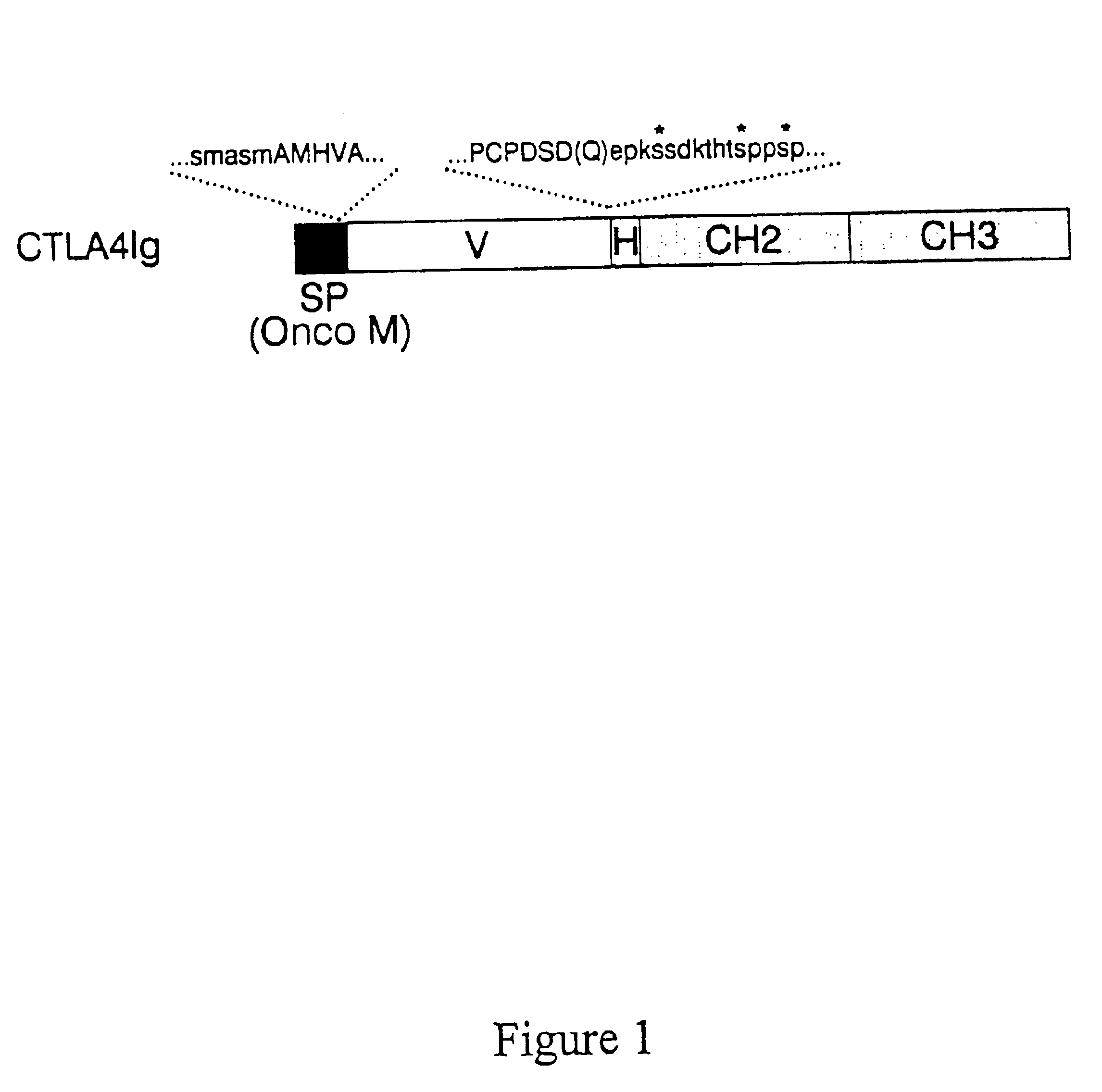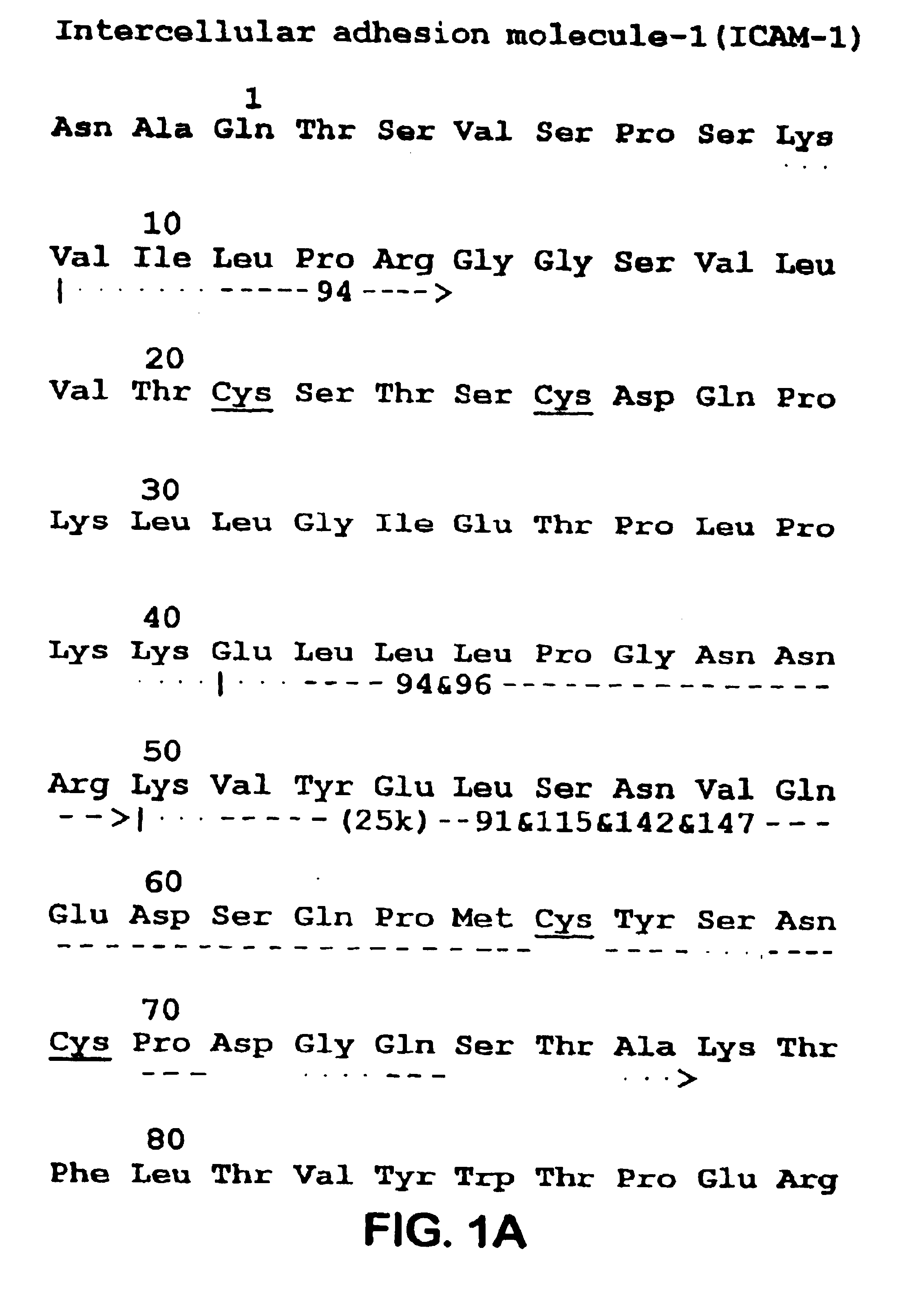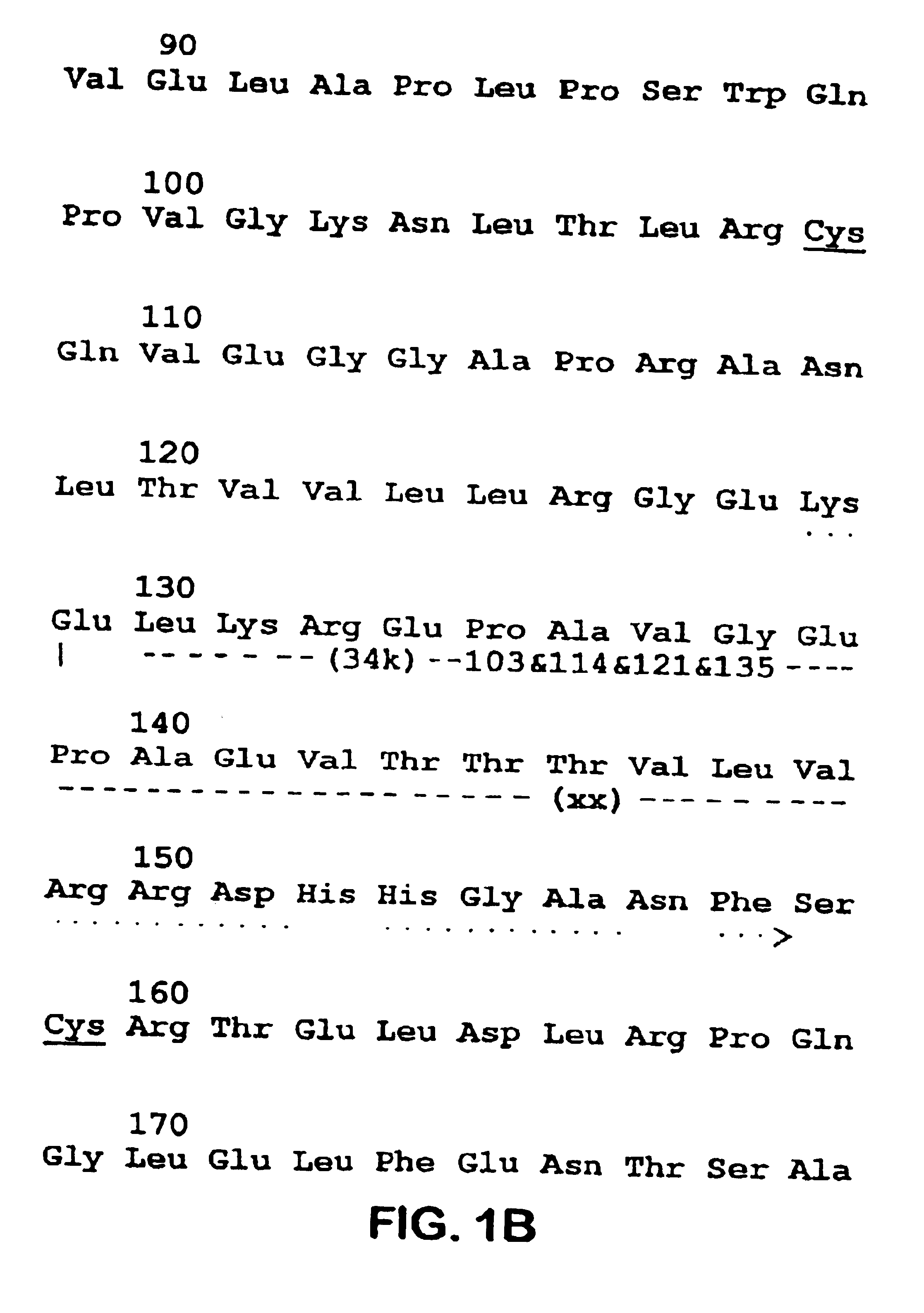Method to inhibit T cell interactions with soluble B7
a technology of soluble b7 and t cell interaction, which is applied in the field of t cell interaction inhibition with soluble b7, can solve the problems of clonal inactivation or t cell anergy, depressing the entire immune system, and questions remain unanswered, and achieve the effect of inhibiting tissue transplant rejection
- Summary
- Abstract
- Description
- Claims
- Application Information
AI Technical Summary
Benefits of technology
Problems solved by technology
Method used
Image
Examples
example 1
Preparation of B7Ig and CD28 Ig Fusion Proteins
[0140]Receptor-immunoglobulin C gamma (IgCγ) fusion proteins B7 Ig and CD28 Ig were prepared as described by Linsley et al., in J. Exp. Med. 173:721-730 (1991), incorporated by reference herein.
[0141]Briefly, DNA encoding amino acid sequences corresponding to the respective receptor protein (e.g. B7) was joined to DNA encoding amino acid sequences corresponding to the hinge, CH2 and CH3 regions of human IgCγl. This was accomplished as follows.
[0142]Polymerase Chain Reaction (PCR). For PCR, DNA fragments were amplified using primer pairs as described below for each fusion protein. PCR reactions (0.1 ml final volume) were run in Taq polymerase buffer (Stratagene, La Jolla, Calif.), containing 20 μmoles each of dNTP; 50-100 pmoles of the indicated primers; template (1 ng plasmid or cDNA synthesized from ≦1 μg total RNA using random hexamer primer, as described by Kawasaki in PCR Protocols, Academic Press, pp. 21-27 (1990), incorporated by ...
example 2
Preparation of CTLA4 Ig Fusion Protein
[0151]A soluble genetic fusion encoding CTLA4 Ig between the extracellular domain of CTLA4 and an IgCγl domain was constructed in a manner similar to that described above for the CD28 Ig construct. The extracellular domain of the CTLA4 gene was cloned by PCR using synthetic oligonucleotides corresponding to the published sequence (Dariavach et al., Eur. Journ. Immunol. 18:1901-1905 (1988)).
[0152]Because a signal peptide for CTLA4 was not identified in the CTLA4 gene, the N-terminus of the predicted sequence of CTLA4 was fused to the signal peptide of oncostatin M (Malik et al., Mol. and Cell. Biol. 9:2847 (1989)) in two steps using overlapping oligonucleotides. For the first step, the oligonucleotide, CTCAGTCTGGTCCTTGCACTCCTGTTTCCAAGCATGGCGAGCATGGCAATGCACGTGGCCCAGCC (SEQ ID NO:8) (which encoded the C terminal 15 amino acids from the oncostatin M signal peptide fused to the N terminal 7 amino acids of CTLA4) was used as forward primer, and TTTGGG...
example 3
CTLA4 Receptor
[0161]To reconstruct DNA encoding the amino acid sequence corresponding to the full length human CTLA4 gene, cDNA encoding amino acids corresponding to a fragment of the transmembrane and cytoplasmic domains of CTLA4 was cloned by PCR and then joined with cDNA encoding amino acids corresponding to a fragment from CTLA4 Ig that corresponded to the oncostatin M signal peptide fused to the N-terminus of CTLA4. Procedures for PCR, and cell culture and transfections were as described above in Example 1 using COS cells and DEAE-Dextran™ transfection.
[0162]Because the expression of CTLA4 receptor protein in human lymphoid cells has not been previously reported, it was necessary to locate a source of CTLA4 mRNA. PCR cDNA reverse transcribed from the total cellular RNA of H38 cells, as noted above, was used for cloning by PCR. For this purpose, the oligonucleotide, GCAATGCACGTGGCCCAGCCTGCTGTGGTAGTG (SEQ ID NO:11), (encoding the first 11 amino acids in the predicted coding seque...
PUM
| Property | Measurement | Unit |
|---|---|---|
| Solubility (mass) | aaaaa | aaaaa |
| Interaction | aaaaa | aaaaa |
Abstract
Description
Claims
Application Information
 Login to View More
Login to View More - R&D
- Intellectual Property
- Life Sciences
- Materials
- Tech Scout
- Unparalleled Data Quality
- Higher Quality Content
- 60% Fewer Hallucinations
Browse by: Latest US Patents, China's latest patents, Technical Efficacy Thesaurus, Application Domain, Technology Topic, Popular Technical Reports.
© 2025 PatSnap. All rights reserved.Legal|Privacy policy|Modern Slavery Act Transparency Statement|Sitemap|About US| Contact US: help@patsnap.com



